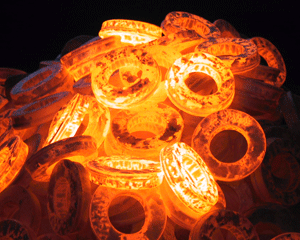The Story of Steel
June 28, 2013 - Author: don.ellis - Comments are closedThe story of Steel
The oldest human evidence of steel is an iron utensil, believed to be a knife, found in an archeological sight in Turkey. That utensil dates back 4000 years.
In the 4th century BC, steel in the form of Protective Clothing and Weapons started showing up predominantly on the Liberian Peninsula, and in ancient Rome.
In these ancient times it was very difficult and thus very expensive to produce items from steel. It was only done when there was no other material that would serve the purpose as well. That purpose would have been the manufacture of Knives, Axes, Swords, Helmets, Etc.
In Modern times the Manufacture of steel has been achieved much more efficiently then possible in those ancient times, with the advent of Blast Furnaces for melting the Iron ores used in steel production.
So much of the things that mankind has achieved, and the way we live our lives today would not be possible without these abilities to process steel from Iron Ore.
About 95% of Steel produced today is produced from Iron Ore. The supply of Iron Ore in the world is not inexhaustible however. At the rate of consumption it is estimated that we could run out of this mineral in approximately 65 years.
The good part of this story is that Steel is completely recyclable. In fact it’s probably the most recyclable material in the world.
You cannot burn it and vaporize it, as is the case with Petroleum based products or wood products.
Steel will simply melt or rust. If it melts, it will cool and it’s still steel. If it rusts, it is then just degrading in time and in nature back to the mineral that it originally was.
It is this property of being solid in ambient temperature, and molten or liquid when heated that has made this material so valuable to us.
In it’s liquid form, it can be poured into molds to create shapes for required usages. This process would be called Casting or molding. Cast iron is still widely used in industry.
In it’s softened by heat form it can be hammered, or pressed into shapes as required. This would be called forging, or drawing.

Steels will also hold up well to Cold Forming, Rolling, Pressing, and Stretching to achieve the desired shapes.
The earliest type of welding would have been to take 2 pieces of different shaped metal, heat them in the area that you would want them joined and them hammer them into each other, thus joining them by pounding the softened metals into each other. The Blacksmithing trade utilized this process.

Today the Welding process is simply the heating of the steels in the area that is being joined to a molten state. The joining of the materials can be accomplished without adding any other materials to the base materials by allowing the base materials to combine with each other in the weld joint, and then cool to 1 solid form. Very often though additional material is added in the welding process to fill the weld joint and add even further strength between the base materials.
A new process of working with Steel and being talked about quite frequently these days is 3D printing of steel parts. This process would involve the heating of the steel to a molten state, and spraying the materials in layers to create a three dimensional shape. As the materials cool from their molten state they become a single solid piece in whatever shape that the engineer could have imagined.
However we discover new ways to process it, steel is and will be a valuable asset now and well in to the future in building our societies, and accomplishing greater things going forward.
Palatine Welding is proud to be just a small part of being involved in the process. We take great pride in the projects that we accomplished in our 40 years of existence, and are looking forward to the opportunities of the next 40 years.
Categories: Uncategorized
